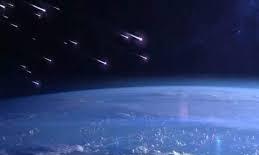
Draconid meteor shower to reach its peak tomorrow
text_fieldsThe Draconid Meteor Shower, linked to the Draco constellation, will reach its peak on October 8 and 9, offering skywatchers a chance to spot dozens of meteors in the evening sky.
This annual meteor event, known for its early evening visibility, will be especially easy to view for casual stargazers, as it occurs just after sunset.
The Draconid meteors will be most visible in the northern hemisphere, where the Draco constellation is located.
On the nights of October 8 and 9, meteors will appear to radiate from Draco's tail, which will be positioned above the Big Dipper in the north-northwest sky. Earth passes through debris left behind by Comet 21P/Giacobini-Zinner, which orbits the Sun every 6.5 years, creating the Draconid shower as our planet moves through its particle trail.
While the Draconid Meteor Shower is not known for high meteor counts like other showers, it offers the unique advantage of evening visibility.
This year, with minimal moonlight interference, the American Meteor Society predicts up to 10 meteors per hour during the peak, though actual numbers may vary. The best time to observe the Draconids will be just after sunset on October 8, making it a convenient spectacle for stargazers looking to enjoy shooting stars without staying up late into the night.





